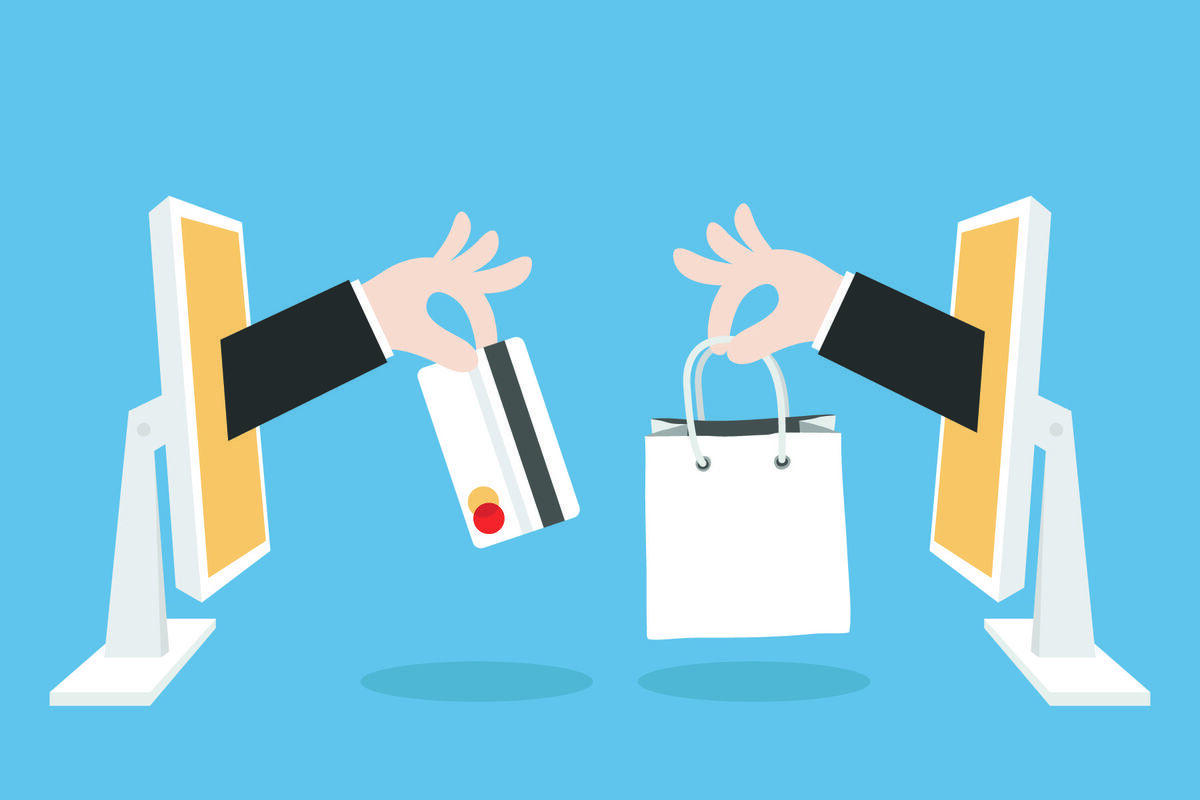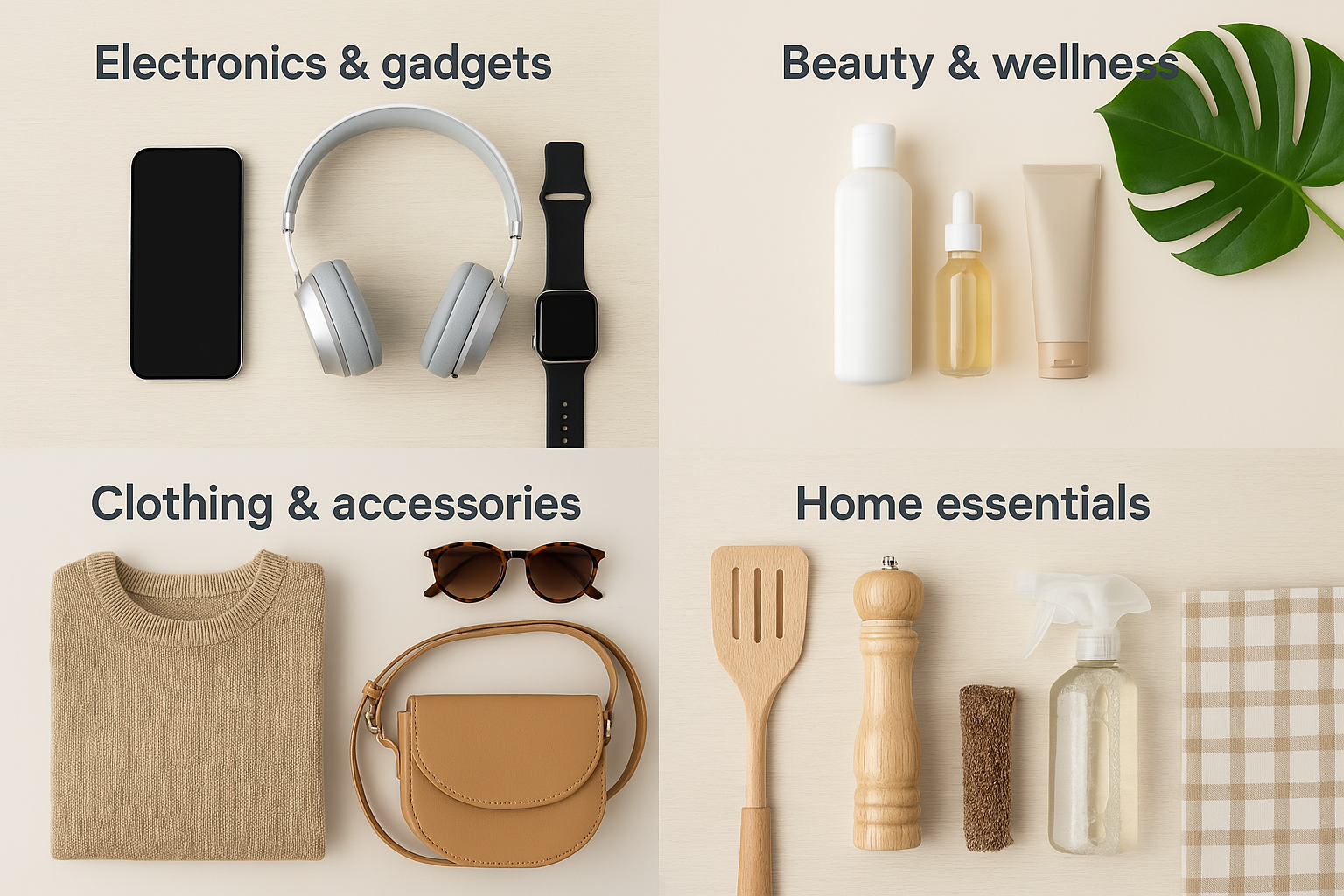How to Sell on the Internet in India
In today’s digital world, selling on the internet is more than just an option; it’s a powerful way to grow. Whether you're a student, a stay-at-home parent, or a small business owner, anyone can start an online business from anywhere in India.
In the first half of 2025, over 2.7 billion people are shopping online globally. That’s a huge opportunity waiting to be tapped, and you don’t need a fancy office or big money to start. A smartphone, internet connection, and the right product are all it takes to begin.

The best part? Selling online is flexible, low-cost, and open to everyone. Start small, improve with experience, and use the reach of the internet to grow your brand step by step.
Step-by-Step Process to Sell on the Internet
Selling on the internet is a smart way to reach more people and grow your business. Let’s break down each step in detail so you can start with confidence.
Step 1: Discover What to Sell Online
Choosing the right products is crucial for success.
- Analyze trending products: Use tools like Google Trends and Amazon Best Sellers to see what’s popular right now. For example, air fryers became a top-selling item in 2020 and remain popular in 2025, especially among health-conscious buyers.
- Solve real problems: Products that make life easier or solve a common issue often sell well. Think about what people need or want.
- Validate with sample ads or small-scale launches: Before investing a lot, test your product idea with a small group or run a few ads. See if people are interested before you go big.
Step 2: Top-Selling Categories to Consider
Some categories always do well online:

- Electronics & gadgets: Phones, headphones, smart watches, and other tech items are in high demand.
- Beauty & wellness: Skincare, haircare, and wellness products are popular, especially among young buyers.
- Clothing & accessories: Fashion is a strong category, from casual wear to unique accessories.
- Home essentials: Items like kitchen tools, décor, and cleaning products are always needed.
Step 3: Choose Where to Sell
There are several ways to sell on the internet:
- Marketplaces: Platforms like Amazon, Flipkart, and Meesho let you reach millions of buyers quickly. They handle much of the setup but may charge fees. If you're into wholesale selling, platforms like IndiaMART and TradeIndia connect you with bulk buyers and B2B customers across India.
- Your own website: Tools like Shopify or WooCommerce allow you to build your own branded store. You control the look, feel, and customer experience.
- Social selling: Platforms like Instagram, Facebook, and WhatsApp are great for reaching people where they spend their time. You can sell directly through posts, stories, or chats.
- Aggregators or niche platforms: If you sell a specific type of product, consider joining a platform that focuses on your category.
Step 4: Register Your Business & Get Legal
Make sure your business is set up correctly:
- Choose a business structure: Decide if you want to be a Sole Proprietor, LLP , or Private Limited Company . Each has different rules and benefits.
- Apply for GST: Most online sellers in India need a GST Registration to pay taxes and sell on major platforms.
- Get a PAN & bank account: Open a bank account in your business name for payments and accounting.
- Add terms & conditions, return/refund policy: Protect your business and inform customers about their rights and your rules.
- IEC Code: If you plan to sell internationally, apply for an Import Export Code (IEC) from DGFT; it's mandatory for cross-border transactions.
Step 5: Set Up Your Online Store
Setting up your store is easier than ever:
- Buy a domain & hosting or choose a marketplace: If you want your own website, pick a domain name and a hosting plan. If not, start selling on a marketplace.
- Set up website/shop layout: Use templates for a clean and professional look. Make sure your site is mobile-friendly.
- Add product listings: Include detailed descriptions, clear pricing, and high-quality images or even 360-degree view images of the products. Good photos or 360-degree images can boost sales by up to 30%.
- Configure delivery, taxes, and shipping options: Make buying easy for your customers by offering clear delivery timelines and costs.
Step 6: Set Up Payments
Offer safe and flexible payment options:
- Use payment gateways: Platforms like Razorpay and PayPal help you accept payments securely.
- Ensure secure payment: Use SSL certificates and PCI-DSS compliant gateways to protect customer data.
- Provide options: Offer UPI, cards, wallets, and cash on delivery.
Step 7: Market Your Products
Getting noticed is key to selling more:
- SEO-optimized product pages: Use keywords and clear descriptions to help your products appear in search results.
- Social media marketing & reels: Share photos, videos, and stories on Instagram and Facebook to attract buyers.
- Email marketing for engagement: Send updates, offers, and reminders to your customers to keep them coming back.
- Google Ads / Facebook Ads: Paid ads can quickly bring new visitors to your store.
- Use influencers and affiliate partners: Partner with people who have a strong online following to promote your products.
Step 8: Manage Orders & Delivery
Smooth delivery keeps customers happy:
- Automate order confirmation and shipping updates: Let customers know when their order is on the way.
- Partner with delivery platforms: Companies like Shiprocket and Delhivery can handle shipping across India.
- Enable tracking for customers: Let buyers track their orders in real time.
Step 9: Offer Customer Support & Build Loyalty
Great service leads to repeat buyers:
- Chat support or WhatsApp for quick responses: Answer questions fast to build trust. Use affordable tools like Zoho Desk or Freshchat to manage queries efficiently and provide real-time support, even if you’re just starting out.
- Collect reviews and feedback: Positive reviews can boost sales. Over 92% of buyers check reviews before buying.
- Offer discounts, points, or referral programs: Reward loyal customers and encourage them to refer friends.
- Resolve complaints professionally: Handle problems quickly and politely to keep your reputation strong.
By following these steps, you can start selling on the internet with confidence. The internet offers endless opportunities, and with the right approach, you can build a successful business that reaches people everywhere.
Challenges and Solutions in Selling on the Internet
Selling on the internet brings many opportunities, but it also comes with real challenges. Understanding these issues and knowing how to solve them is key for any online seller.
Managing Competition
Challenge: The number of online sellers is growing fast. Big platforms like Amazon and Flipkart have thousands of new stores joining every day. This makes it harder for any one business to stand out.
Solution: To succeed, focus on a specific niche. Sell products that are unique or solve a real problem. Offer high quality and give excellent customer service. Personalize your store by using AI tools to recommend products or send targeted emails. Social selling, like using Instagram and WhatsApp, can help you connect with buyers directly.
Payment & Fraud Issues
Challenge: Online payments are convenient, but they also bring risks. Fake orders and failed payments are common problems.
Solution: Use secure payment gateways like Razorpay or PayPal. These services protect both sellers and buyers. Always enable SSL on your website for safe transactions. For Cash On Delivery (COD) orders, verify the buyer’s phone number before shipping. Use fraud filters and keep an eye on suspicious activity. This helps reduce losses and keeps your business safe.
Logistics & Delivery Delays
Challenge: Late deliveries and courier issues can upset customers. Fast delivery is now expected, especially with big brands offering same-day shipping.
Solution: Work with reliable logistics partners like Shiprocket or Delhivery. Provide tracking links so customers can follow their orders. If there is a delay, inform the buyer quickly and offer support. Automating order updates saves time and builds trust. Some sellers use AI to predict delivery times and avoid issues.
Facing these challenges is part of selling on the internet. By focusing on quality, security, and customer care, you can turn these problems into opportunities for growth.
Get Your Company Registered Today
Free consultations for MCA approvals to help you get started with your business.
End Note
Selling on the internet is open to everyone, no matter your experience or background. With the right products, a clear plan, and a focus on customer service, you can reach buyers across the world. Start small, learn from each step, and use digital tools to grow your business. The online market is growing fast, and there are real opportunities for those who act.
Stay updated, keep improving, and always put your customers first. Success comes from taking action and adapting as you go. Selling online is your chance to build something valuable and lasting in today’s digital world.
Frequently Asked Questions (FAQs)
What do I need to start selling on the internet?
−To start selling online, you need a product or service, a smartphone or computer, and an internet connection. You should also register your business, set up a bank account, and choose where to sell, such as a marketplace or your own website. Good product photos and clear descriptions help attract buyers.
How do I choose what to sell online?
+Is it necessary to register my business to sell online?
+What are the best platforms to sell products online?
+How can I accept payments from customers online?
+How do I promote my products online?
+What are the benefits and profitability of selling on the internet?
+How do I handle shipping and delivery?
+What should I do if a customer wants to return a product?
+How can I build trust and keep my online customers coming back?
+What are the common challenges in online selling?
+Do I need technical skills to sell online?
+Can I sell online without my own website?
+

